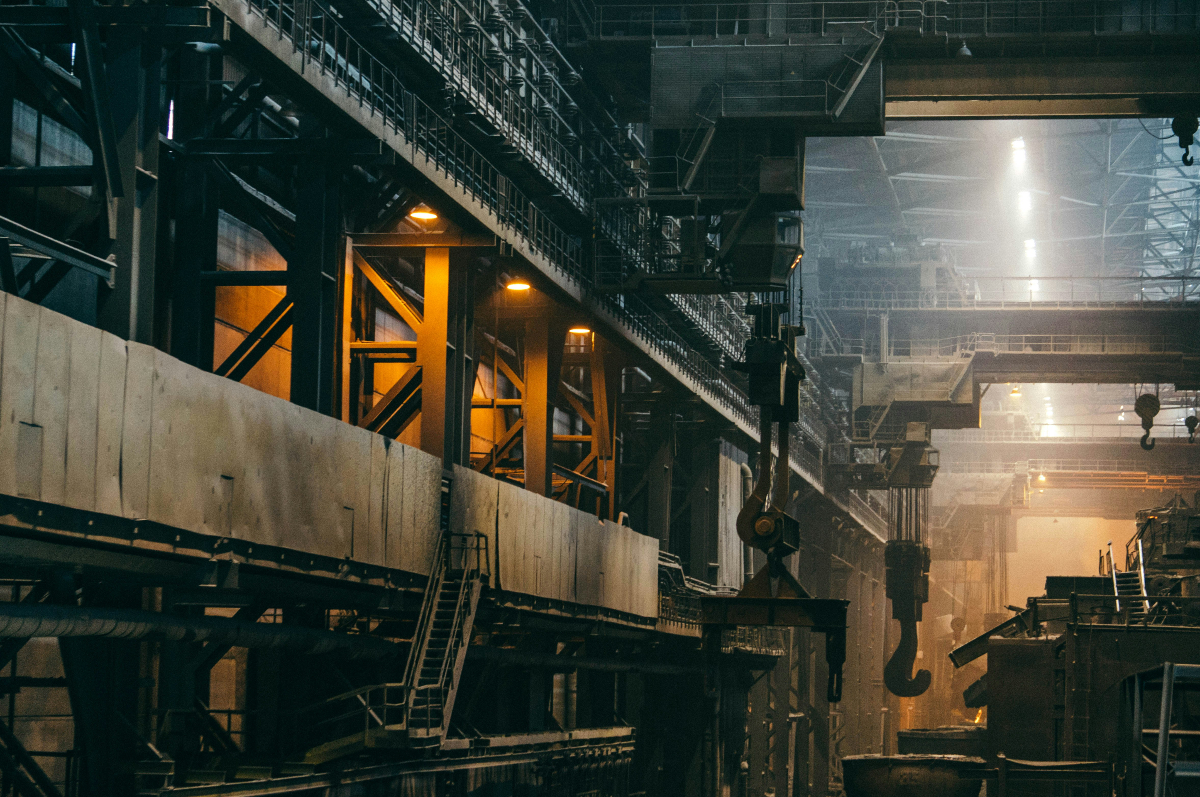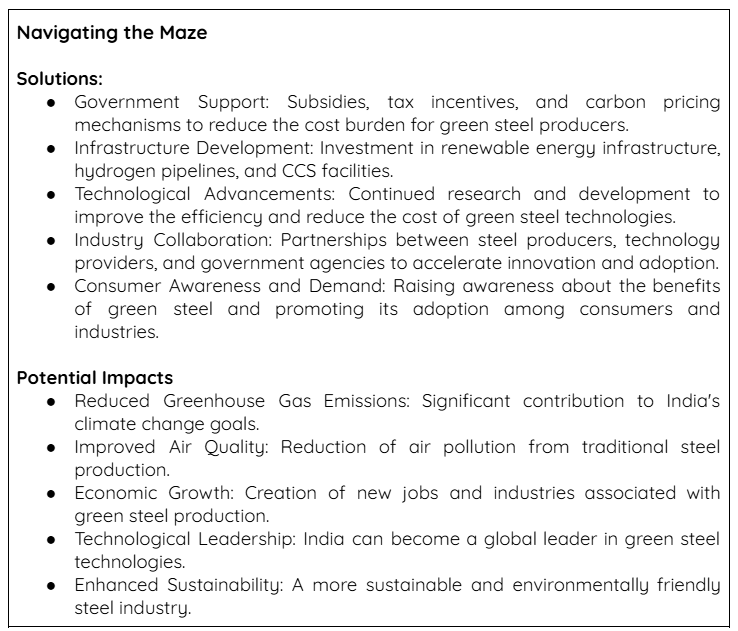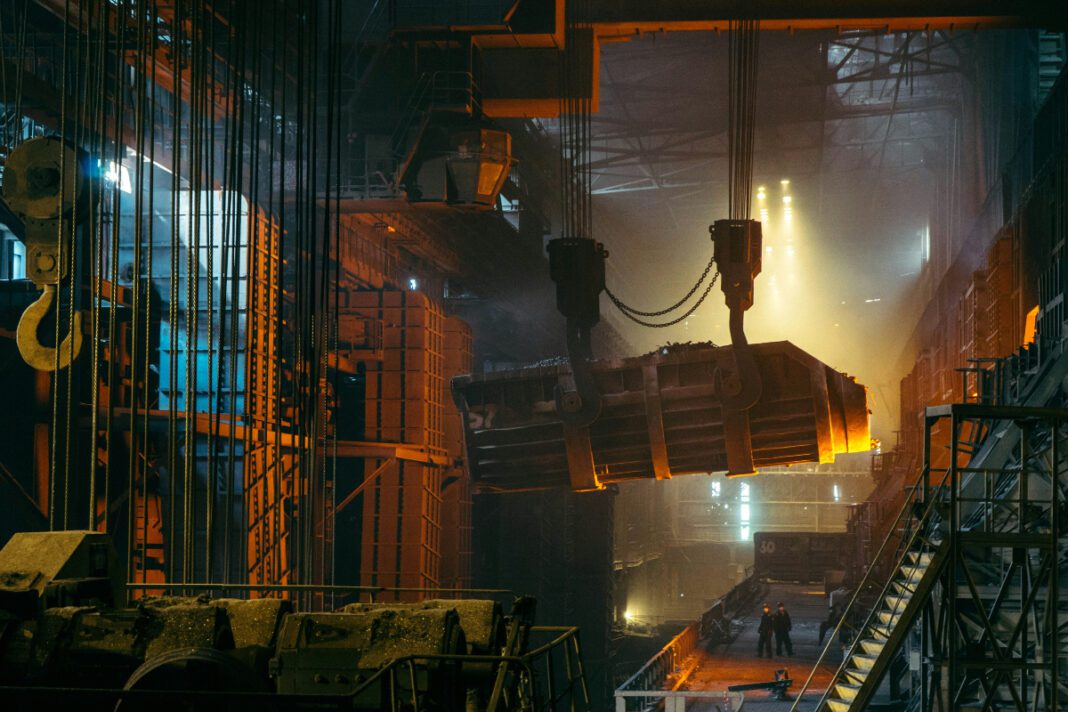India, a rapidly growing economy, has witnessed a significant expansion of its steel industry in recent decades. As a major consumer and producer of steel, the country plays a crucial role in global steel markets. However, the industry’s growth has also come at a cost to the environment. Traditional steel production methods are energy-intensive and emit substantial amounts of greenhouse gases, contributing to climate change and air pollution.
To address these environmental challenges, the concept of ‘green steel’ has emerged. Green steel refers to steel produced using environmentally friendly methods that minimise or eliminate greenhouse gas emissions and reduce the industry’s overall environmental footprint. This can involve adopting cleaner production technologies, utilising renewable energy sources, and implementing carbon capture and storage (CCS) solutions.
The transition to green steel offers several potential benefits for India. It can help the country achieve its climate change goals, improve air quality, and enhance its reputation as a responsible global player. Additionally, green steel production can create new economic opportunities, stimulate technological innovation, and foster sustainable development.
Experts investigate the key technical hurdles preventing the widespread adoption of green steel technologies in India. Additionally, they explore strategies to reduce the cost of green steel and incentivise its adoption by both consumers and industries.

Breaking Barriers
The transition to green steel is fraught with technical challenges and economic hurdles. Despite the environmental benefits, the high cost of producing green hydrogen and the relative price of renewable electricity compared to fossil fuels pose significant barriers.
Pardeep Kumar Thapliyal, AVP & Business Head, Jindal Steel & Power Limited, points out, “The transition to green steel production methods, such as using hydrogen in DRI method (Direct Reduced Iron), requires substantial investment and infrastructure. The high cost of producing green hydrogen and the relative price of renewable electricity compared to fossil fuels are major economic barriers. But by leveraging the advancements in production economies, achieving economies of scale, and exploring financial support mechanisms from the government through subsidies and policies can make this new age technology more economically attractive.”
Anurag Sinha, Executive Director, Engineers India Ltd, highlights that there may be incentives to make the shift, “Yes, there are challenges to be overcome in the production of green steel, starting with the raw materials and the energy sources used. Unless we have green energy, it is difficult to navigate the entire manufacturing chain and produce green steel. Additionally, the recycling component of green steel, along with the recent scrap steel policy, can provide a significant boost. While challenges exist, the industry needs to prepare itself to meet them.”
Arvind Bodhankar, CSO, AMNS India, concurs, “The transition to green steel production is primarily hindered by the high costs associated with emerging technologies like green hydrogen and carbon capture and storage (CCS). These methods require significant investments in infrastructure and research. However, to overcome these hurdles, we believe that a combination of factors is crucial.”
He highlights a few key necessities. First, a strong demand for green steel from consumers and industries will incentivise producers to invest in these technologies. Second, customers should be willing to pay a premium for green steel, recognising its environmental benefits. Third, government policies, such as subsidies, tax breaks, and financing options, can significantly reduce the cost burden for green steel producers. Finally, continued technological advancements and economies of scale will play a vital role in making green steel production more cost-effective.
Sinha adds that the initial cost of green steel will likely be higher than that of traditional steel. However, policy initiatives can encourage the use of green steel through tax incentives and the provision of green ratings, such as carbon credits. These initiatives can be enhanced even when the market rises.
Driving Down Costs
The energy used to produce steel will become cheaper as renewable energy sources, such as solar, wind, and nuclear power, become more readily available. Sinha emphasises that India is rich in these renewable energy sources, and green hydrogen is also picking up pace.
He states, “I believe that the most appropriate beneficiary for encouraging green steel, in addition to policy initiatives during the initial phase of this transition, will be carbon credits. Carbon credits are likely to be a long-term solution.”
Bringing down the cost of green steel is essential for widespread adoption. Bodhankar says, “We envision several strategies to achieve this. Securing cheaper scrap and raw materials, coupled with access to affordable renewable electricity, can significantly reduce the production costs of green hydrogen. Economies of scale will also play a crucial role in driving down costs as production volumes increase. To incentivise consumers and industries to adopt green steel, despite potential price differences, governments can implement policies such as carbon pricing, subsidies, and preferential procurement. These measures will make green steel more economically attractive and support its market penetration.”

Thapliyal emphasises research and awareness, “Research and development spending should be increased to lower costs and hasten the development of new technologies. Market dynamics can be shifted in favour of green steel by raising consumer awareness of the product and encouraging businesses to make sustainability commitments.”
“Also, the Government should implement policies that create markets for green steel, such as carbon pricing and subsidies. JSP already has EPD for producing steel with C02 emissions less than 500 kg per tonne of steel by using scrap and renewable energy. This is immediately available and can be supplied at competitive prices till H2 reduced green steel attains commercial feasibility.”
Policy Push
Infrastructure development is also a crucial aspect of this transition, along with policy initiatives. Incentives, such as initial tax incentives, and the development of the green energy industry should be considered together.
Government policies and infrastructure development are vital to accelerate the transition to green steel. Creating a robust demand for green steel through incentives and regulations is essential. Bodhankar says, “Additionally, relaxing taxes and duties on related materials and establishing favourable regimes for interstate renewable energy power transfer can significantly reduce production costs. Uniform power banking rules will also streamline operations and promote efficiency. By implementing these measures, governments can create a conducive environment for green steel producers and foster sustainable growth.”
Apart from incentivising the usage, governments can also incentivise and subsidise companies that invest in green steel technologies by offering tax credits, grants, and other financial support. This can help mitigate the high upfront costs associated with switching to low-carbon production methods.
Framing stricter emissions regulations and well-defined carbon reduction targets can encourage the steel industry to adopt greener practices. Policies requiring the use of low-carbon materials in public projects can also establish a steady demand for green steel.
Thapliyal states, “Research and development (R&D) funding can encourage the development of new technologies, such as hydrogen-based steel production. Governments can also support pilot projects and the development of new technologies, like these, in public infrastructure projects. Government can also implement public procurement policies and by using their purchasing power green steel can be prioritised in public infrastructure projects opening to large opportunities for green steel production.”
A Promising Path
Bodhankar paints a positive picture, “The long-term outlook for green steel is extremely positive. Widespread adoption of green steel will not only reduce the carbon footprint of the steel industry but also create a level playing field for producers.” As demand for green steel grows, investments in research and development will continue to drive down costs and improve production efficiency. This transition will not only benefit the environment but also contribute to a more sustainable and resilient steel industry.
Green steel is currently a greener material compared to other competitive construction materials. Sinha highlights, “Therefore, we need to prioritise sustainability in the long run. In India, the cement-to-steel ratio is currently skewed towards cement or concrete. However, if this ratio shifts towards steel, demand for steel will undoubtedly increase. Compared to traditional steel, green steel will be the preferred choice for stakeholders.”
Thapliyal concurs that the market is expected to grow significantly, driven by increasing demand for sustainable manufacturing practices and the reduction of carbon footprints in the steel industry. A study from McKinsey suggests by 2030, the demand for green steel could increase by up to 4.5 times the current levels. The global green steel market size, valued at around USD 2.62 billion in 2023, is projected to reach USD 129.08 billion by 2032, exhibiting a CAGR of 55.6 per cent. Widespread adoption of green steel can significantly reduce carbon emissions and help with corporate sustainability goals.
In addition to green steel production itself, associated industries will need to adapt. Incinerator industries operating in the steel sector and the secondary market must also be prepared. Furthermore, major environmental risks such as corrosion and fire, which are inherent to steel, must be addressed. If these risks can be mitigated with green steel, it will be even more advantageous.

Quote
“To incentivise consumers and industries to adopt green steel, despite potential price differences, governments can implement policies such as carbon pricing, subsidies, and preferential procurement.”
– Arvind Bodhankar, CSO, AMNS India
“The recycling component of green steel, along with the recent scrap steel policy, can provide a significant boost. While challenges exist, the industry needs to prepare itself to meet them.”
– Anurag Sinha, Executive Director, Engineers India Ltd
“Market dynamics can be shifted in favour of green steel by raising consumer awareness of the product and encouraging businesses to make sustainability commitments.”
– Pardeep Kumar Thapliyal, AVP & Business Head, Jindal Steel & Power Limited





